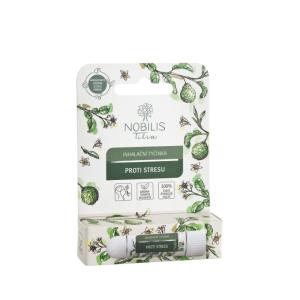
The tongue reveals health, be aware of spots on the tongue

When the Tongue Speaks for Health - What Do Tongue Spots Mean?
The tongue is much more than just a tool for speech and taste. It is a mirror of our health. Various changes in its surface, color, or structure can indicate that something is out of balance in the body. Spots on the tongue are not always a reason to panic, but they should certainly not be ignored. Whether they are red, white, or differently bordered spots, the tongue often sends signals that are worth understanding.
What Can It Mean When Spots Appear on the Tongue?
Among the most common types of changes are white spots on the tongue, red spots, or strangely irregular patterns reminiscent of a map. These "linguistic maps," as they are sometimes poetically called, are not just an aesthetic peculiarity - in some cases, they can point to nutritional deficiencies, irritation, inflammation, or even chronic diseases.
For example, white spots on the tongue may indicate a yeast infection known as candidiasis. This often appears after taking antibiotics, with weakened immunity, or in people with diabetes. In such cases, the tongue is covered with a white coating that may be associated with bad breath and burning.
In contrast, red bordered spots on the tongue may signal so-called geographic tongue, a non-infectious condition where the epithelial lining in some parts is lost, and the tongue looks as if irregular red islands with a white border have been painted on it.
Geographic Tongue - When the Mouth Turns into a Map
A geographic tongue (Latin lingua geographica) is striking at first glance but fortunately, usually a harmless phenomenon. It typically manifests as red spots of varying sizes with a white border that change location - sometimes on the tip of the tongue, other times on the sides. This condition is more common in children and women, although its exact cause remains unclear.
Interestingly, a geographic tongue and spots on the tongue often appear during stressful periods, hormonal changes, or in connection with food allergies. People with this condition may complain of sensitivity or burning when consuming spicy foods, citrus, or alcohol.
The case of Mrs. Alena from Brno, who came for a preventive check-up at the dentist, is exemplary. The dentist noticed a strangely colored tongue with striking red spots during a routine examination. Alena was unaware of anything - she felt no pain, only occasional burning when drinking wine. After examination, it turned out to be a geographic tongue, likely associated with her seasonal allergies. A change in diet and the temporary elimination of certain foods led to significant improvement.
Try our natural products
When to Be Alert - Warning Signs a Doctor Should Evaluate
Not every spot on the tongue is benign. Bordered or white spots that do not disappear within two weeks may be a sign of leukoplakia - a precancerous condition that requires examination. Risk factors include smoking, excessive alcohol consumption, or mechanical irritation, such as from an ill-fitting dental prosthesis.
The sudden onset of red or white spots that are painful may also be a sign of a viral infection (such as herpes), an autoimmune disease, or in rare cases, an indication of oral cancer. Therefore, it is important not to underestimate changes that persist or worsen.
As Dr. Radka Kalousová, an ENT specialist, says: "The tongue is one of the few places on the body where you have the mucous membrane constantly in view. If something appears there that wasn't there before and doesn't look like typical irritation, consult a specialist."
What Impact Does Diet and Lifestyle Have?
Just like skin or hair, the tongue also reacts to what we eat, how we sleep, and how we take care of our body. Lack of B vitamins, iron, or folic acid can lead to painful cracks, redness, or a smooth tongue without typical papillae.
Especially vegetarians and vegans should ensure sufficient vitamin B12, whose long-term deficiency can also cause inflammatory changes on the tongue. Similarly, people with absorption disorders (e.g., celiac disease) may experience unpleasant manifestations precisely in the mouth.
On the other hand, excessive consumption of sugar and processed foods promotes yeast growth in the mouth, which can lead to the formation of white spots on the tongue. Proper oral hygiene, a balanced diet, and sufficient fluids are therefore essential. An interesting addition can be regular tongue cleaning - for example, using a scraper that removes coating and improves breath.
When Is It Just Aesthetics and When Is It About Health?
It is entirely normal for the tongue not to be perfectly smooth and uniform in color. It has a natural texture and slight color differences. However, if new, well-defined spots appear that do not disappear even after a few days, caution is advised.
In many cases, it is a transient phenomenon - a reaction to a certain food, slight mechanical injury, or stress. For example, after eating pineapple, kiwi, or very spicy food, burning of the tongue and transient redness may occur. These usually subside on their own within a few hours.
But if spots are accompanied by pain, swelling, difficulty speaking or swallowing, or if spots persist for more than two weeks, a specialist - whether a dentist, ENT doctor, or general practitioner - should examine the tongue.
Prevention and Care - What Everyone Can Do
The foundation is regular monitoring of the tongue during daily hygiene. If you brush your teeth and tongue every morning, you'll notice potential changes much sooner. Regular visits to the dentist are also important, as they often notice changes that a layperson might overlook.
Simple steps that help maintain a healthy tongue include:
- A balanced diet rich in vitamins and minerals, especially B vitamins, iron, and zinc
- Adequate water intake during the day for natural mucous membrane hydration
- Thorough oral hygiene, including tongue cleaning
- Limiting alcohol, smoking, and sweets, which disrupt the balance in the mouth
- Stress hygiene, as emotional tension often manifests precisely in the mouth
In some cases, natural remedies may help - for example, gargling with sage or chamomile tea, which has anti-inflammatory effects. There are also gentle natural mouthwashes without alcohol on the market that help maintain oral microflora balance.
The tongue may not speak, but its appearance can say more than we might expect. Spots on the tongue are not always serious, but they always deserve attention. Perceiving the signals the body sends is the first step to overall health - and the tongue is a very eloquent spokesperson in this regard.


